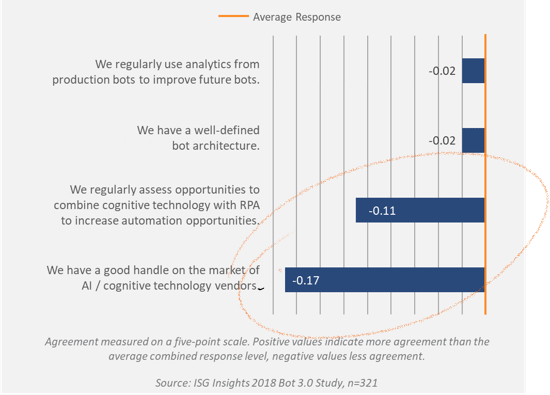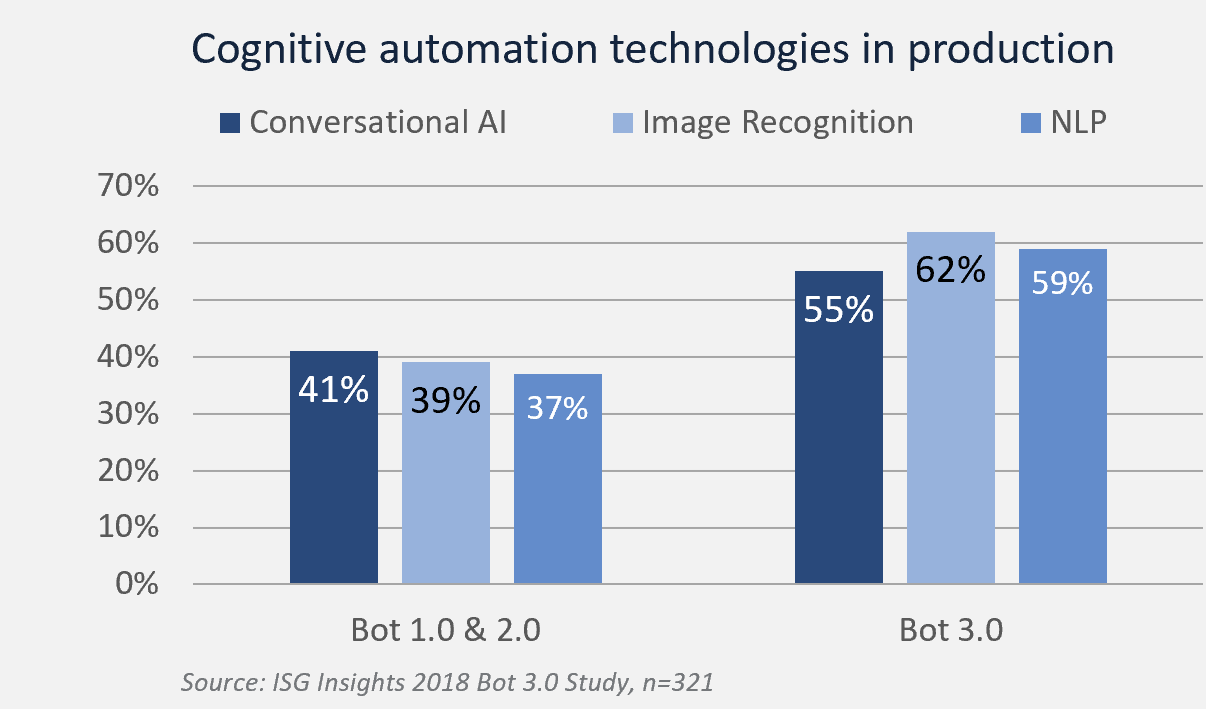Plenty has been written about artificial intelligence (AI) and its game-changing potential. But, like many technologies before it, AI poses an important question. Are the potential benefits enough to get the enterprise on board? And if so, why is everyone so nervous about getting going?
It will only take a quick search on your favorite search engine or social networking site before you are sufficiently overwhelmed by the multitude of views on AI, cognitive and automation technologies. So it's not surprising that, for the average enterprise executive, AI is about as confusing as quantum psychics. Perhaps it’s this information overload and the conflicting messages and misinformation that have yielded a generally stand-offish approach to AI from enterprise leaders – despite the fact that their very futures may well depend on their decisions about it.
The truth is, AI is still only spoken about with confidence in certain circles, and those circles still appear some distance from the enterprise. Is it this disconnect that is causing a hesitation in wide-scale AI adoption? Recent ISG Research suggests it may be so. The figure below shows the results when we asked business executives about AI and cognitive technologies. We found a general lack of understanding, specifically in the vendor space, likely caused by a large number of vendors operating under the cognitive and AI banner.

Those who are hesitant to invest not only find this group of technologies difficult to understand but difficult to build a business case around. It’s not because they can't see the future potential, but because thinking about AI is actually a pretty daunting thing to do. From its application in chatbots to predictive analytics, to delivering operational headcount savings and predicting events – AI has great potential, but it may be its versatility in the business that is one of its biggest blockers.
And business leaders are rightly asking if it makes sense to have a single strategy that covers all applications of AI. And is it even possible to have a single strategy that covers everything from using intelligent optical character recognition in your employee on-boarding process to using pattern recognition to highlight potential fraud? Though both of these examples rely on a form of AI and both require data (which must be structured, labeled and accessible), the outcomes are radically different and they benefit very separate parts of the enterprise.
AI depends on data, as so much of commercial life now does. Data is the reason electric appliance maker Dyson believes it can safely enter the electric car market. And it’s the reason Google, Amazon, Facebook and Apple are so powerful in the consumer market. These companies have designed products that collect vast amounts of data from a large proportion of the world’s population on a daily basis. But, for the typical enterprise, data is a real sticking point. And it’s the lack of a strategy to collect, clean and analyze data that inhibits many enterprises from using AI. Until a company can get its data in order, labeled and accessible, most AI isn’t useful.
Even those businesses that have structured, labeled and accessible data sets still come up against their own challenges of wide-scale adoption. They are not sure where to concentrate first or what tools to use. Though is isn’t easy to get going, it also isn’t impossible.
If you want to make progress, here are some steps to help you on your way.
- Start collecting and labelling all your data. Make it accessible; document what you have and where it is stored.
- Test and learn. If you’re not sure where to start, start small. Look initially at known business problems and get some external help understanding where AI can add value to your business.
- Educate yourself about the different AI tools on the market. Many powerful algorithms are already available to you for training. You don’t have to start completely from scratch; a lot of the hard work has been done already.
- Manage your expectations. AI adoption is a journey. Invest wisely in the right problems, using the right tools with the right partners.
- Openly discuss use cases with colleagues and collaborate between departments. Avoid bringing in a tool or creating a solution that doesn’t work for the wider business.
ISG Research highlights three use cases for AI technology that companies plan to focus on in 2019: 1) large volumes of processes that require customer or internal contact, 2) documents such as invoices of application forms that must be processed, and 3) emails, system notes or other forms of static text that must be read. Conversational AI, image recognition and natural language processing (NLP) technologies can automate these activities now. As the figure below illustrates, companies at different stages on the automation journey – mapped by the ascending levels Bot 1.0, Bot 2.0, Bot 3.0 – use these different technologies to differing degrees.

Of course, AI is already quite prevalent in our daily lives. From recommendations on Netflix and Amazon to face recognition of photos on Facebook, real-life use cases will continue to stack up. Don’t wait too long to lay the foundations in your enterprise, or you may well find yourself playing catch-up against the machines.
ISG helps organizations sort out the AI opportunities that are right for them. Contact us to discuss how we can help you.
